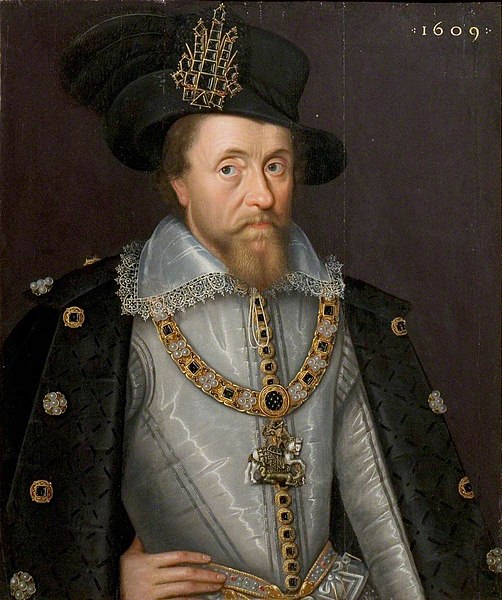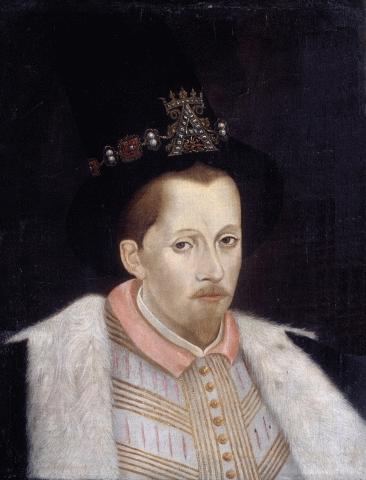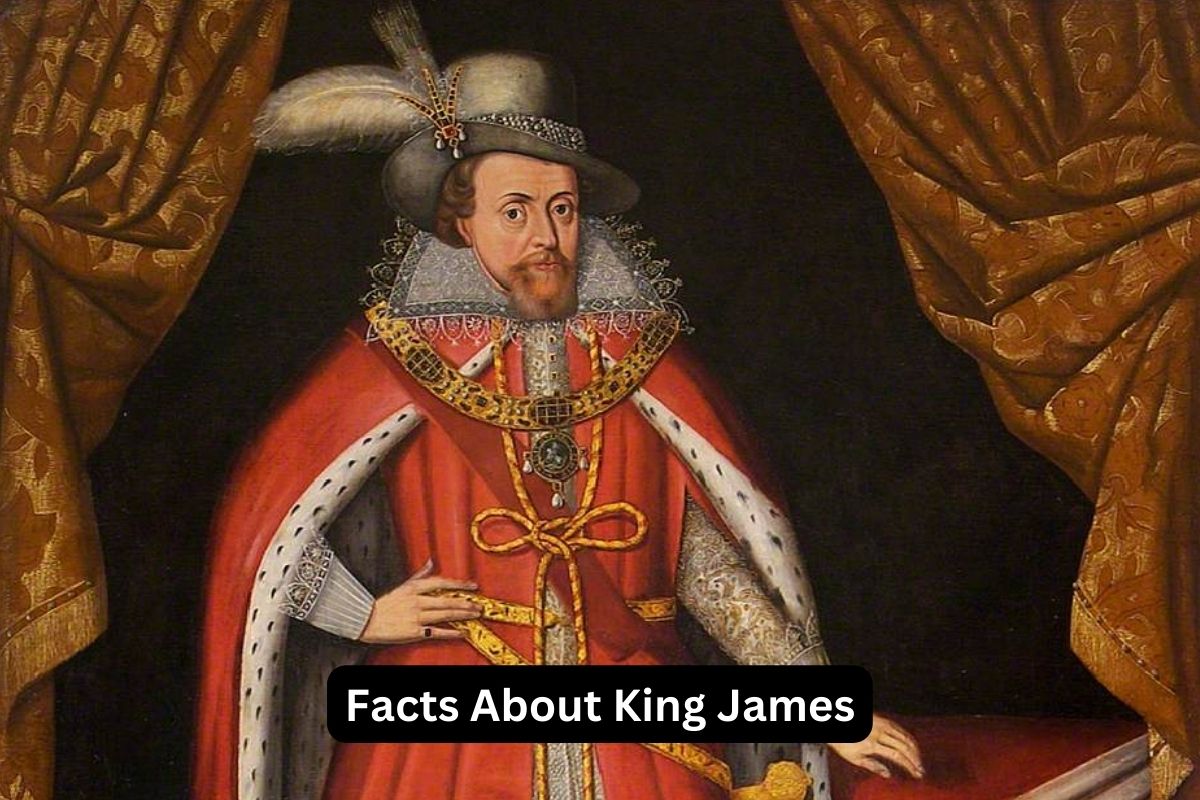King James I is noted for overseeing the personal union of the English and Scottish crowns in 1603.
This union occurred when he became King James I of England upon the death of Queen Elizabeth I of England, as he was her closest living relative with a legitimate claim to the English throne.
As a result, he became the monarch of both England and Scotland, although the two countries remained separate with distinct legal and political systems.
This event laid the foundation for what would later become the formal union of England and Scotland into the Kingdom of Great Britain in 1707 under the Act of Union.
King James Facts
1. Born in 1566 in Scotland
King James I was born on June 19, 1566, in the city of Edinburgh, Scotland. He was the son of Mary, Queen of Scots, and her second husband, Henry Stuart, Lord Darnley.
His birth came at a turbulent time in Scottish history, as the country was undergoing political and religious strife.

2. Became King James VI of Scotland in 1567
Shortly after his birth, James became King James VI of Scotland in 1567 following the abdication of his mother, Mary, Queen of Scots. As he was an infant at the time, a regency council ruled on his behalf.
Also Read: Charles II Accomplishments
His reign in Scotland was marked by efforts to stabilize the country’s religious conflicts, including the ongoing struggle between Catholics and Protestants.
3. Became King James I of England in 1603
King James’s most significant milestone came in 1603 when Queen Elizabeth I of England passed away without an heir.
Since James was the closest living relative with a legitimate claim to the English throne, he was invited to become King James I of England, uniting the crowns of England and Scotland.
4. Commissioned the King James Bible in 1604
The King James Version of the Bible, completed in 1611, is another testament to his patronage, as it remains one of the most influential English translations of the Bible to this day. His support for the arts contributed to the cultural richness of the Jacobean era, named after his reign.
5. Patron of the arts, supporting Shakespeare’s works
King James was a patron of the arts and played a significant role in the flourishing of English literature and drama during his reign.
Also Read: King James Bible Facts
He supported and sponsored the work of William Shakespeare and the King’s Men, a renowned theater company of the time. Some of Shakespeare’s most famous plays, including “Macbeth” and “Hamlet,” were written during King James’s rule.

6. Faced the Gunpowder Plot in 1605
One of the notable events during King James’s reign was the Gunpowder Plot of 1605. This conspiracy aimed to blow up the House of Lords in the Palace of Westminster during the State Opening of Parliament on November 5, 1605.
The plot’s leader, Guy Fawkes, and his co-conspirators, who were Catholic extremists, sought to assassinate King James I and eliminate the Protestant leadership of England. However, the plot was foiled when authorities discovered Fawkes guarding barrels of gunpowder in the basement of the Parliament building.
Guy Fawkes and his fellow conspirators were arrested, tried, and executed. Today, the Gunpowder Plot is commemorated in the United Kingdom with Bonfire Night or Guy Fawkes Night, celebrated on November 5th each year.
7. Wrote “Daemonologie” on witchcraft beliefs
King James was deeply interested in matters of witchcraft and the supernatural. He wrote a book titled “Daemonologie” in 1597, which explored his beliefs in witchcraft, demons, and the occult.
This work endorsed the persecution of witches and contributed to the witch hunts and trials that occurred during his reign, particularly in Scotland. The witch trials resulted in the persecution and execution of many people, mostly women, who were accused of practicing witchcraft.
8. Oversaw the union of the English and Scottish crowns
King James I is noted for overseeing the personal union of the English and Scottish crowns in 1603. This union occurred when he became King James I of England upon the death of Queen Elizabeth I of England, as he was her closest living relative with a legitimate claim to the English throne.
As a result, he became the monarch of both England and Scotland, although the two countries remained separate with distinct legal and political systems. This event laid the foundation for what would later become the formal union of England and Scotland into the Kingdom of Great Britain in 1707 under the Act of Union.
9. Established English and Scottish plantations in Ireland
King James’s reign saw the expansion of English and Scottish plantations in Ireland. Plantations involved the colonization of Irish land, often confiscating it from native Irish landowners, and the establishment of English and Scottish settlers.
The goal was to assert English and Scottish control over Ireland and suppress native Irish resistance. This policy had profound and lasting effects on Ireland, contributing to centuries of tension and conflict between different religious and ethnic groups on the island.
10. Died in 1625, succeeded by his son, Charles I
King James I died on March 27, 1625, at the age of 58. He was succeeded by his son, Charles I.
Charles’s reign would be marked by ongoing conflicts with Parliament, leading to the English Civil War (1642-1651) between royalist forces loyal to the monarchy and parliamentary forces seeking greater political power.
The war ultimately resulted in the temporary overthrow of the monarchy and the establishment of the Commonwealth of England, led by Oliver Cromwell.
